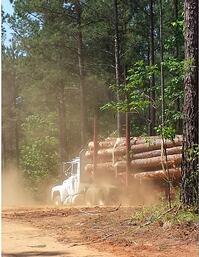
Here are a few truths about wood supply chain management that have been proven over and over again:
- An optimized supply chain produces competitively priced end products.
- When a mill sources wood raw materials from an optimized supply chain, it gets better quality wood and lowers its total acquisition costs.
- Companies considered leaders in supply chain management in industrial products markets have Earnings before Interest and Taxes (EBIT) that is 174% greater than other companies in their peer groups (PwC Global Supply Chain Survey 2013).
As global competition for paper and wood products puts downward pressure on end product pricing and increased demand for wood raw materials puts upward pressure on wood raw materials, the importance of managing the wood supply chain for efficiency will become even more pronounced.
Most procurement managers and their teams have already taken advantage of obvious cost savings  opportunities by eliminating:
opportunities by eliminating:
- High cost sources of fiber
- Low quality sources of fiber
- Sources with high freight or difficult logistical challenges
Once this low hanging fruit has been picked, however, additional room for improving supply chain efficiency almost always still exists. Some of the more difficult questions to answer when it comes to extracting additional value from the supply chain include:
- How does my raw material procurement system differ from the best performers in my peer group?
- Are there places where I outperform the market? Underperform the market? (See Daniel Stuber's blog post on how to use cost curves to answer these questions.)
- Can I avoid spot market purchases and lower my costs?
- Am I focusing my procurement targets in the lowest cost areas of my procurement zone?
In order to answer these questions, organizations need a good handle on their own data, and they also need a source of data that describes the rest of the market as well. Drilling down into the data allows you to identify inefficiencies and develop fact-based solutions for optimizing your supply chain. Used in this way, data becomes a powerful decision-making tool, one that can help you plan strategically, develop operational blueprints and proceed tactically.
Identifying the next level of supply chain efficiency requires a formal process that allows you to pose questions and mine data for the answers. To achieve this next level of cost improvement, a procurement team must collect, analyze and act on data. Implementing each of these steps is critical when managing a supply chain improvement process.


 Pete Coutu
Pete Coutu



